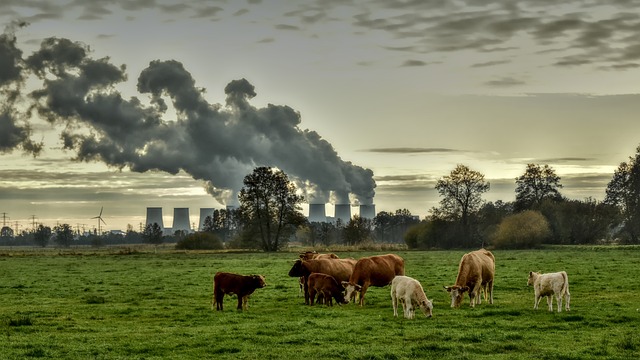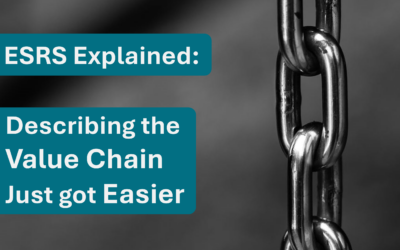How to know what to disclose specifically for your company in ESRS E2 Pollution, what are the disclosure requirements, and an educational video is included in this article.
What is ESRS E2 Pollution and its main objective?
The objective of ESRS E2 Pollution is to establish specific disclosure requirements that enable stakeholders to fully comprehend how a company’s operations impact environmental pollution and manage those effects. This standard focuses on the pollution of air, water, and soil, and encompasses the management of substances of concern, including those of very high concern.
- Understanding Environmental Impacts
ESRS E2 aims to provide clarity on how a company affects the environment, particularly regarding the pollution of air, water, and soil. This includes both the positive and negative actual or potential impacts, helping stakeholders understand the full scope of a company’s environmental footprint.
- Actions and Outcomes
The standard requires companies to disclose any actions they have taken to prevent or mitigate negative environmental impacts. This includes detailing the results of such actions and how they contribute to pollution control and the elimination of toxic substances, aligning with initiatives such as the EU Action Plan for Zero Pollution.
- Strategic Adaptation
Companies must explain how they are adapting their business models and strategies in response to the need for a sustainable, pollution-free economy. This includes plans to align with environmental regulations and transition towards practices that significantly reduce or eliminate pollution.
- Risk and Opportunity Management
Disclosure must also cover the nature, type, and extent of material risks and opportunities related to the company’s pollution-related impacts and dependencies. This includes how these risks and opportunities are managed, particularly those arising from regulatory compliance and innovations in pollution control technologies.
- Financial Implications
ESRS E2 requires companies to discuss the financial effects of their pollution-related activities over the short, medium, and long term. This helps stakeholders assess the economic consequences of environmental risks and opportunities on the company’s financial health.
- Substances of Concern
The standard extends to the management of substances of concern, requiring disclosures on how these substances are handled, the impacts of their use, and compliance with regulations restricting their use. This ensures that stakeholders are informed about potential health and environmental risks associated with hazardous substances.
By fulfilling these objectives, ESRS E2 Pollution ensures that companies provide transparent, comprehensive information about their environmental performance, particularly in relation to pollution. This helps stakeholders make informed decisions based on the company’s commitment to environmental stewardship and sustainability.
How does ESRS E2 Pollution interact with other standards within ESRS?
ESRS E2 Pollution interacts extensively with other governance and environmental standards within the European Sustainability Reporting Standards (ESRS) framework to provide a comprehensive overview of environmental impacts and their interconnections. This interaction ensures a holistic approach to sustainability reporting, covering various aspects of environmental management and governance. Here’s how ESRS E2 Pollution integrates with other standards:
Interaction with Other Environmental Standards
- ESRS E1 Climate Change
Pollution and climate change are interconnected, particularly through the emissions of greenhouse gases such as CO2, CH4, N2O, HFCs, PFCs, SF6, and NF3, which contribute to both air pollution and climate warming. ESRS E2 and ESRS E1 are read together to provide a full picture of how a company’s activities impact air quality and climate, ensuring that measures to reduce greenhouse gas emissions are also considered within the broader context of pollution control.
- ESRS E3 Water and Marine Resources
This standard complements ESRS E2 by addressing how water consumption, water recycling, and the management of marine resources relate to pollution. For instance, the impact of activities on water pollution, including contaminants like microplastics, is crucial for understanding the overall environmental performance of a company, especially in sectors where water risk is significant.
- ESRS E4 Biodiversity and Ecosystems
Pollution is a direct driver of biodiversity loss, affecting ecosystems and species. ESRS E2 works in conjunction with ESRS E4 to disclose how pollution impacts biodiversity and what measures are in place to mitigate this impact. This relationship underscores the importance of pollution control in preserving ecological health and diversity.
- ESRS E5 Resource Use and Circular Economy
The principles of circular economy include minimizing waste and, by extension, reducing pollution. ESRS E2 and ESRS E5 are interconnected, highlighting how strategies to reduce resource extraction and increase recycling contribute to decreased pollution levels. This standard emphasizes the transition towards sustainable practices that not only conserve resources but also prevent environmental pollution.
Integration with Social Standards
- ESRS S3 Affected Communities:
Pollution-related impacts often extend to human communities, particularly those located near industrial activities. ESRS E2 is linked with ESRS S3 to ensure that the social dimensions of pollution, such as health impacts and community well-being, are adequately addressed. This shows the importance of managing pollution not only for environmental reasons but also to protect and improve quality of life for affected communities.
General Disclosure and Risk Management
- ESRS 1 General Requirements and ESRS 2 General Disclosures:
ESRS E2 should be understood and implemented in light of the general principles and requirements outlined in ESRS 1 and ESRS 2. This includes integrating pollution-related disclosures with general governance, strategy, and risk management practices as described in ESRS 2, particularly the chapter on Impact, Risk, and Opportunity Management.
By reading ESRS E2 in conjunction with these related standards, companies can ensure a comprehensive, integrated approach to reporting that covers all relevant aspects of pollution and its broader environmental and social impacts.
How to know what to disclose for your company in ESRS E2
Note! All the 6 sections of disclosures below might not have to be disclosed depending on what’s material for the company concerning E2 Pollution. The logic of what to disclose is included in the Mentcon model for the ESRS web-app to make companies aware of what to disclose, based on the draft of ID 177 – Links between AR16 and Disclosure requirements, and will be updated in the Mentcon model if any changes are made in the final version.
What are the disclosure requirements under ESRS E2 Pollution?
These are divided into six sections of disclosure requirements:
- ESRS E2 IRO-1 – Description of the processes to identify and assess material pollution-related impacts, risks and opportunities
- E2-1 – Policies related to pollution
- E2-2 – Actions and resources related to pollution
- E2-3 – Targets related to pollution
- E2-4 – Pollution of air, water and soil
- E2-5 – Substances of concern and substances of very high concern
The disclosure requirements of ESRS E2 Pollution are designed to enable a comprehensive understanding of how a company’s activities influence pollution and manage related impacts, risks, and opportunities and are summarised below.
General and Impact Management
Identification and Assessment. Companies must describe the processes used to identify and assess material pollution-related impacts, risks, and opportunities across their operations and value chain. This includes methodologies, tools used for screening, and any consultations conducted, particularly with affected communities.
Policies and Strategic Management
Policies on Pollution. Companies are required to disclose their policies for managing material impacts related to pollution, including air, water, and soil pollution. This encompasses policies aimed at preventing, mitigating, and controlling pollution, substituting and minimizing the use of hazardous substances, and managing emergency situations to limit their environmental and human impact.
Actions and Resources
Implementation of Policies. Disclosure of actions taken and resources allocated to achieve pollution-related objectives. Companies should detail their action plans, the resources committed, and align their actions with a mitigation hierarchy that prioritizes pollution prevention, reduction, and ecosystem restoration.
Targets and Metrics
Pollution-Related Targets. Companies must disclose specific targets set to manage pollution, including targets related to air pollutants, water emissions, soil pollution, and hazardous substances. The disclosure should also indicate whether these targets are influenced by regulatory requirements or voluntary commitments and consider ecological thresholds.
Detailed Pollution Information
Specific Pollution Disclosures. Companies are required to disclose the types and amounts of pollutants emitted, focusing on regulated pollutants listed under relevant laws like the E-PRTR Regulation. This includes emissions to air, water, and soil, and the generation or use of microplastics.
Substances of Concern
Management of Hazardous Substances. Disclosure of information on the handling of substances of concern and very high concern, including their production, use, distribution, and the impacts on health and the environment. Companies should also report the amounts of these substances generated or used, and how these substances are managed across their lifecycle.
Financial Implications
Anticipated Financial Effects.Companies should disclose the anticipated financial effects of material pollution-related risks and opportunities, providing both quantitative and qualitative data. This includes the impact of pollution on the company’s financial position, performance, and cash flows over different time horizons, and the critical assumptions used to estimate these effects.
Contextual Information
Background and Context. Additional contextual information should be provided to give stakeholders a better understanding of the pollution data, including changes over time, measurement methodologies, and data collection processes. Companies should explain any limitations or uncertainties in the methodologies used.
The disclosure requirements ensure that stakeholders can assess the effectiveness and comprehensiveness of a company’s approach to managing its pollution impact, contributing to informed decision-making and enhanced accountability in environmental stewardship.
Full list of disclosure requirements in ESRS E2 Pollution
Direct link to the topic ESRS E2 Pollution in ESRS: Consolidated TEXT: 32023R2772 — EN — 22.12.2023 (europa.eu)
Video of ESRS E2 Pollution (Educational)
Mentcon is creating a new video that will replace this one below, but for now it hard to find any qualitative videos explaining ESRS E2 Pollution, then this video.
This educational video was made for the draft of ESRS from the EU financed organization EFRAG who was responsible of creating the ESRS. The minor changes made in the final version of ESRS 2 pollution has not impacted this video’s relevance.





